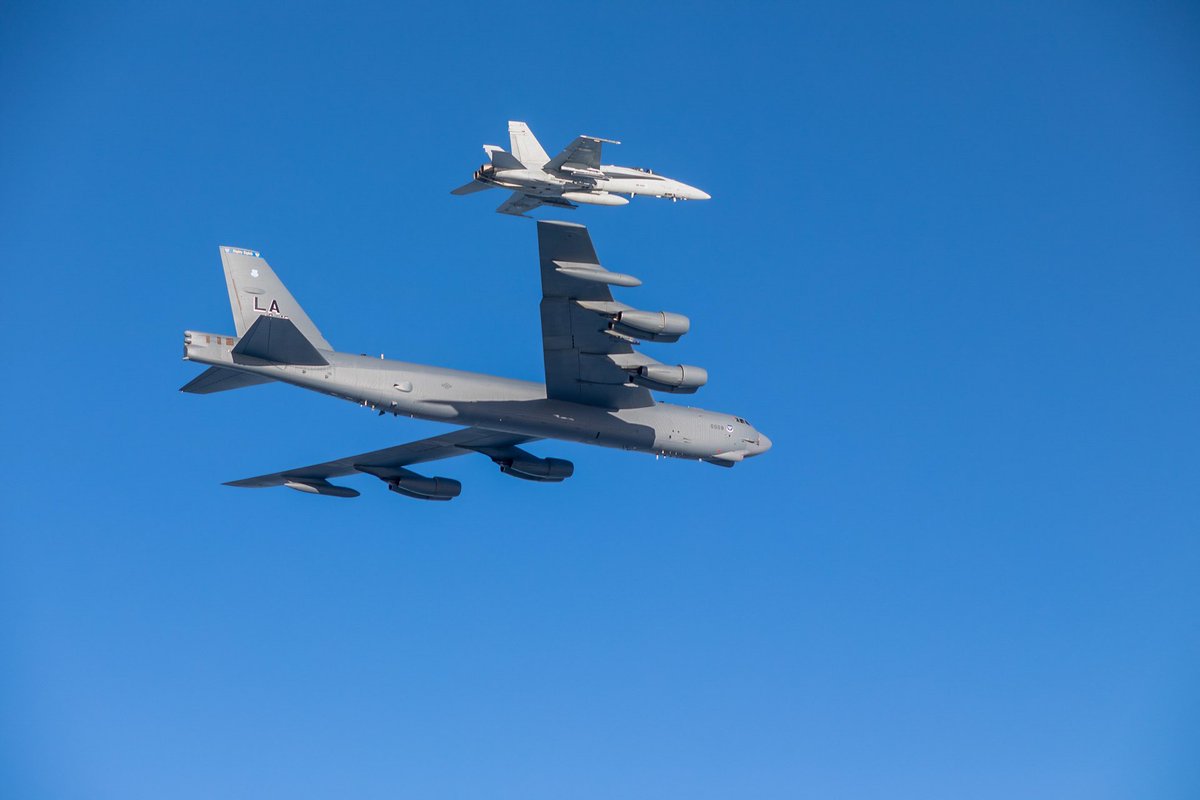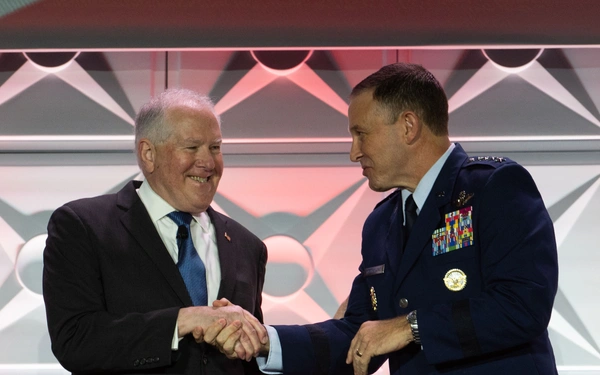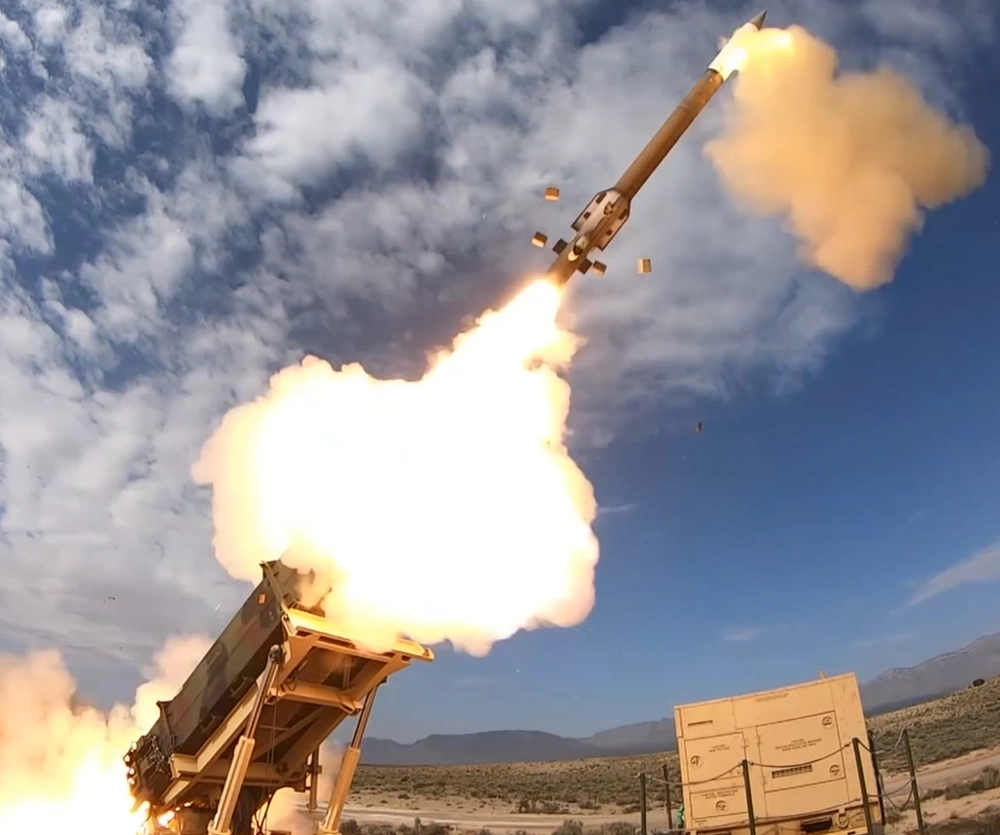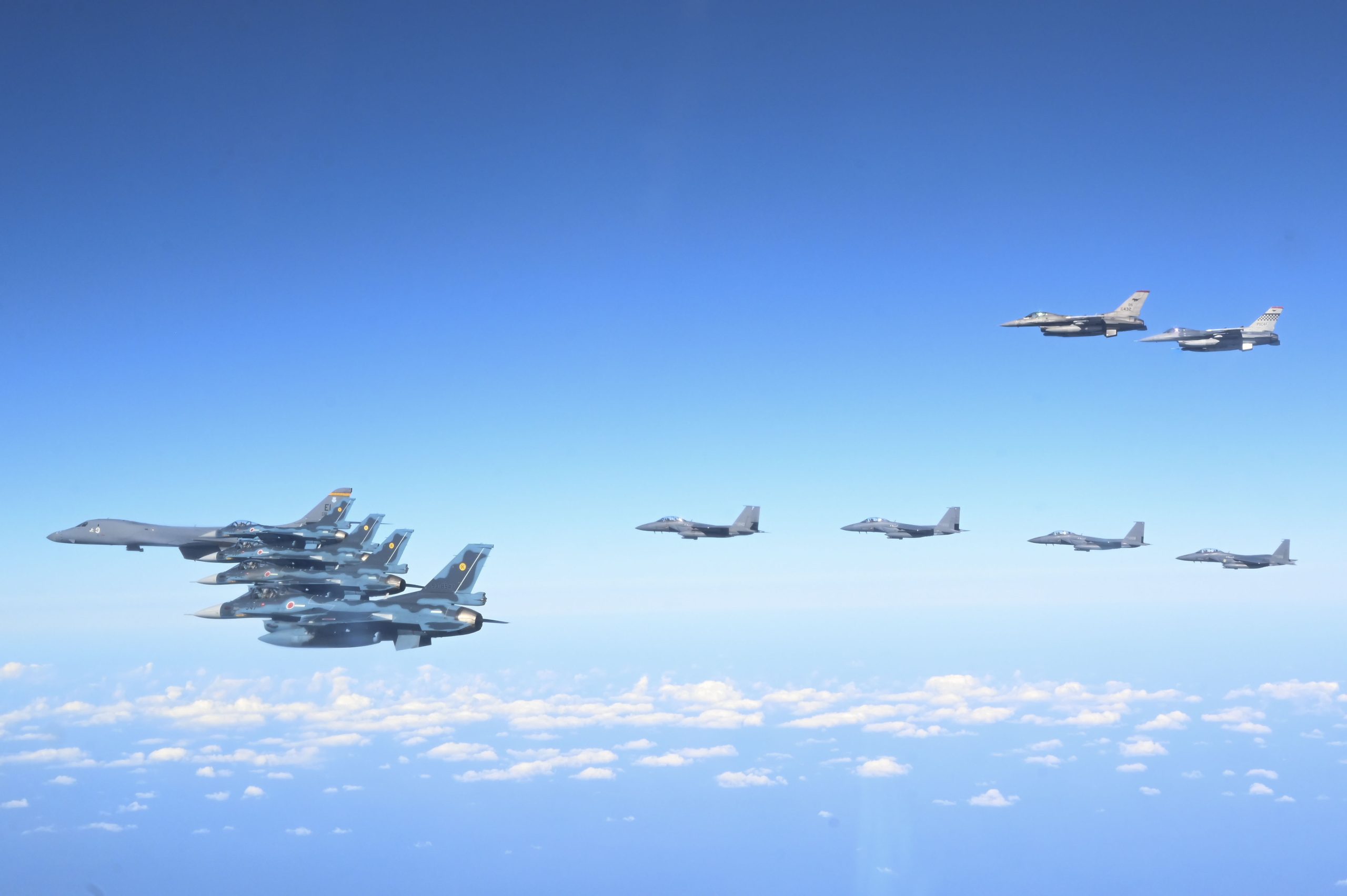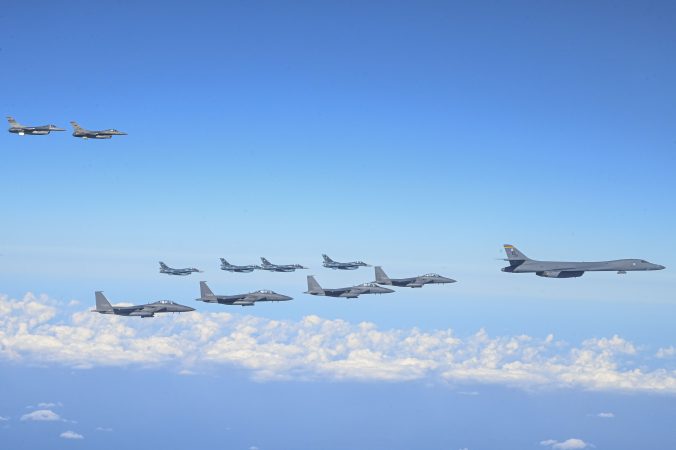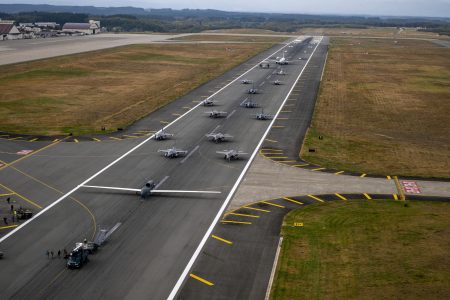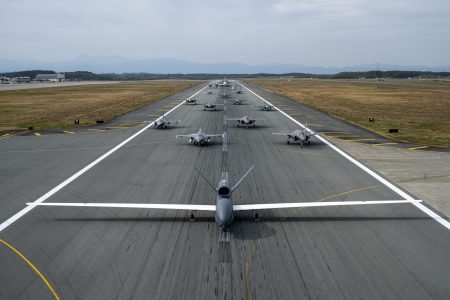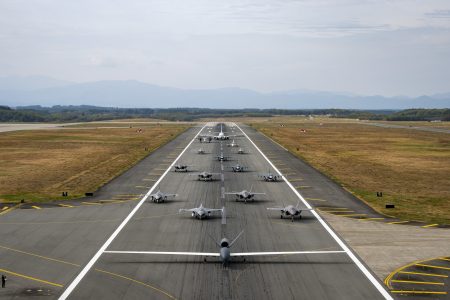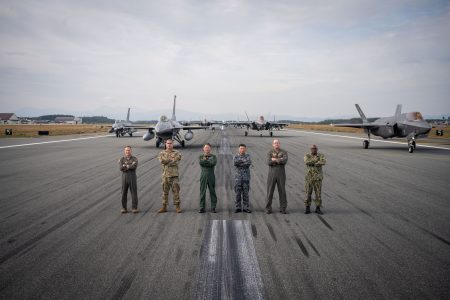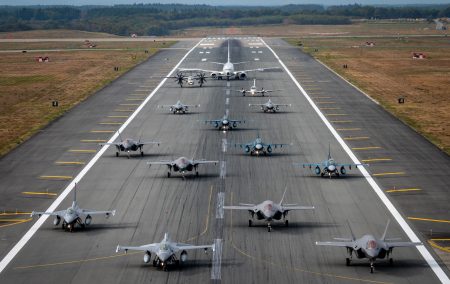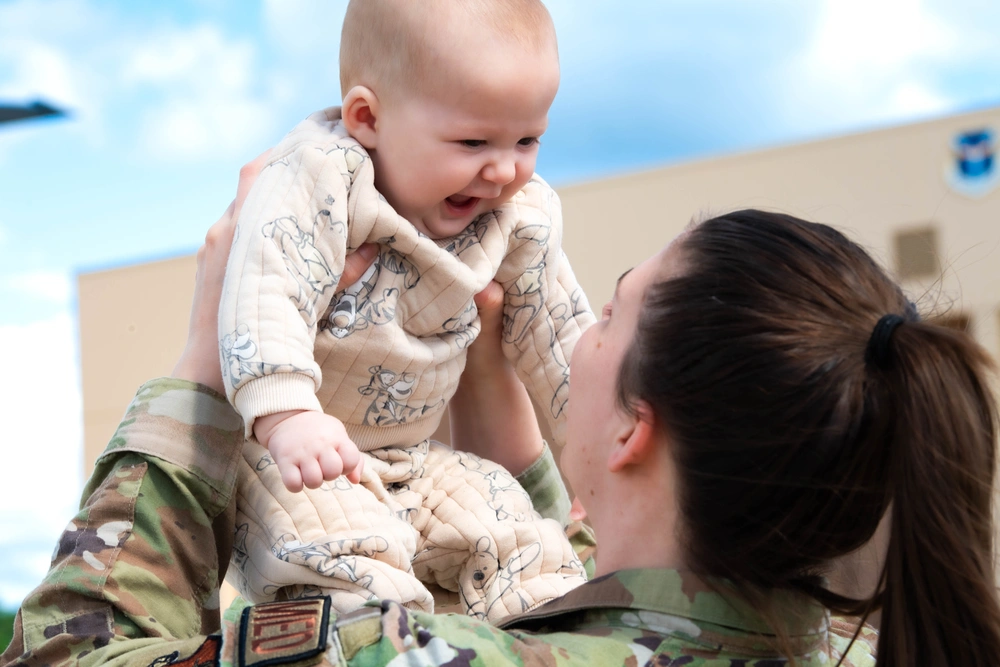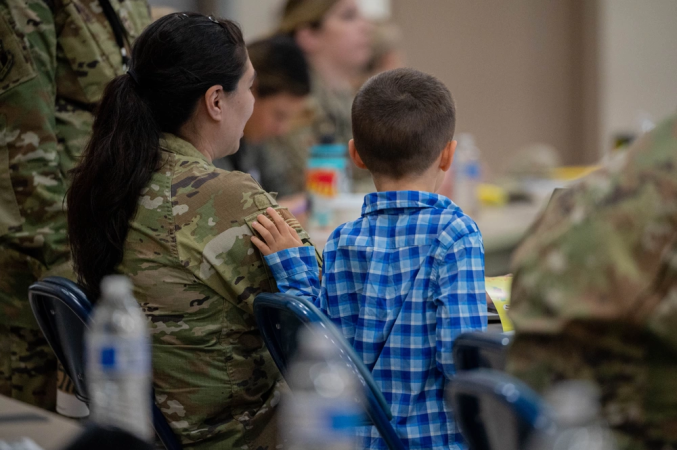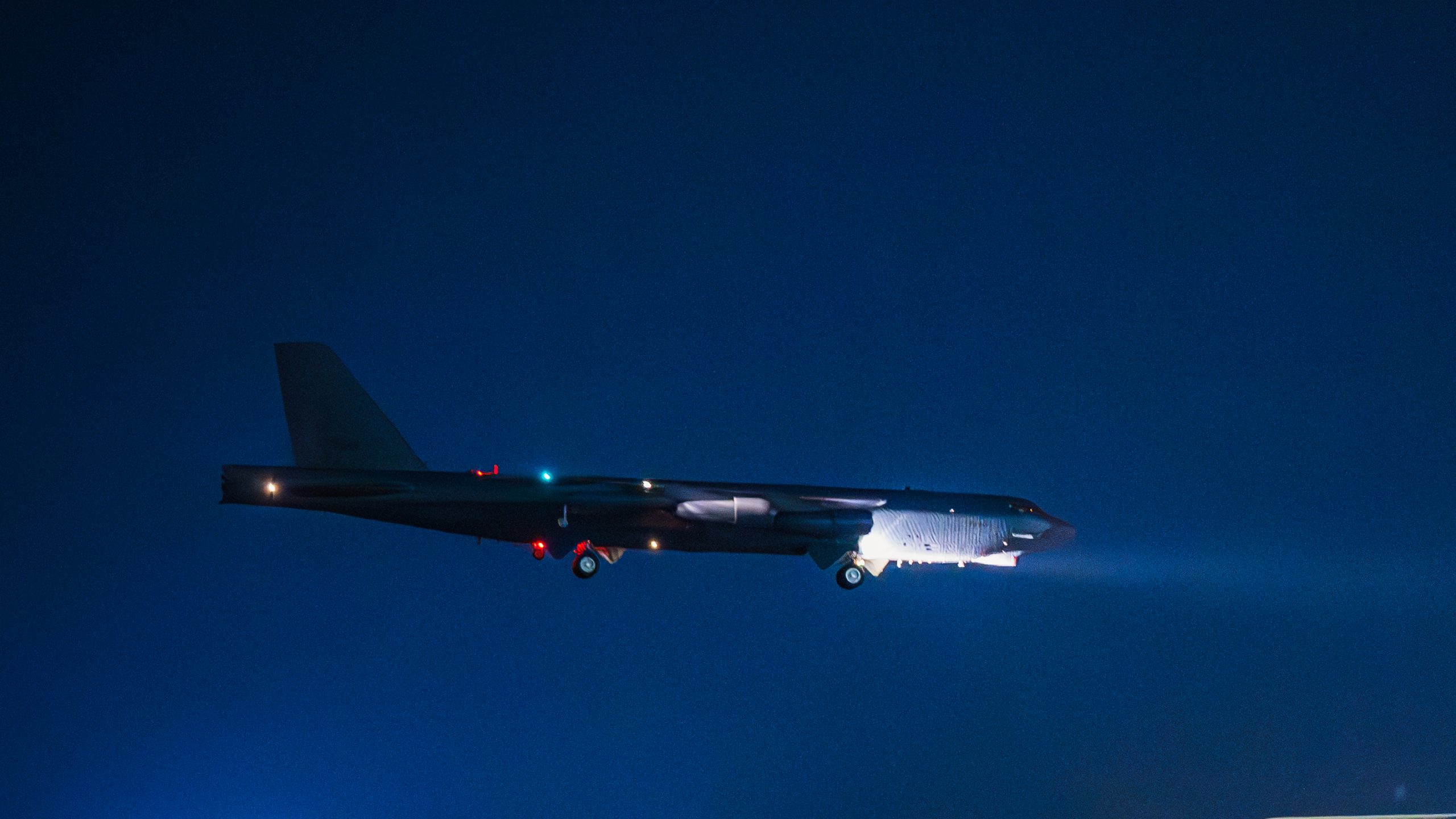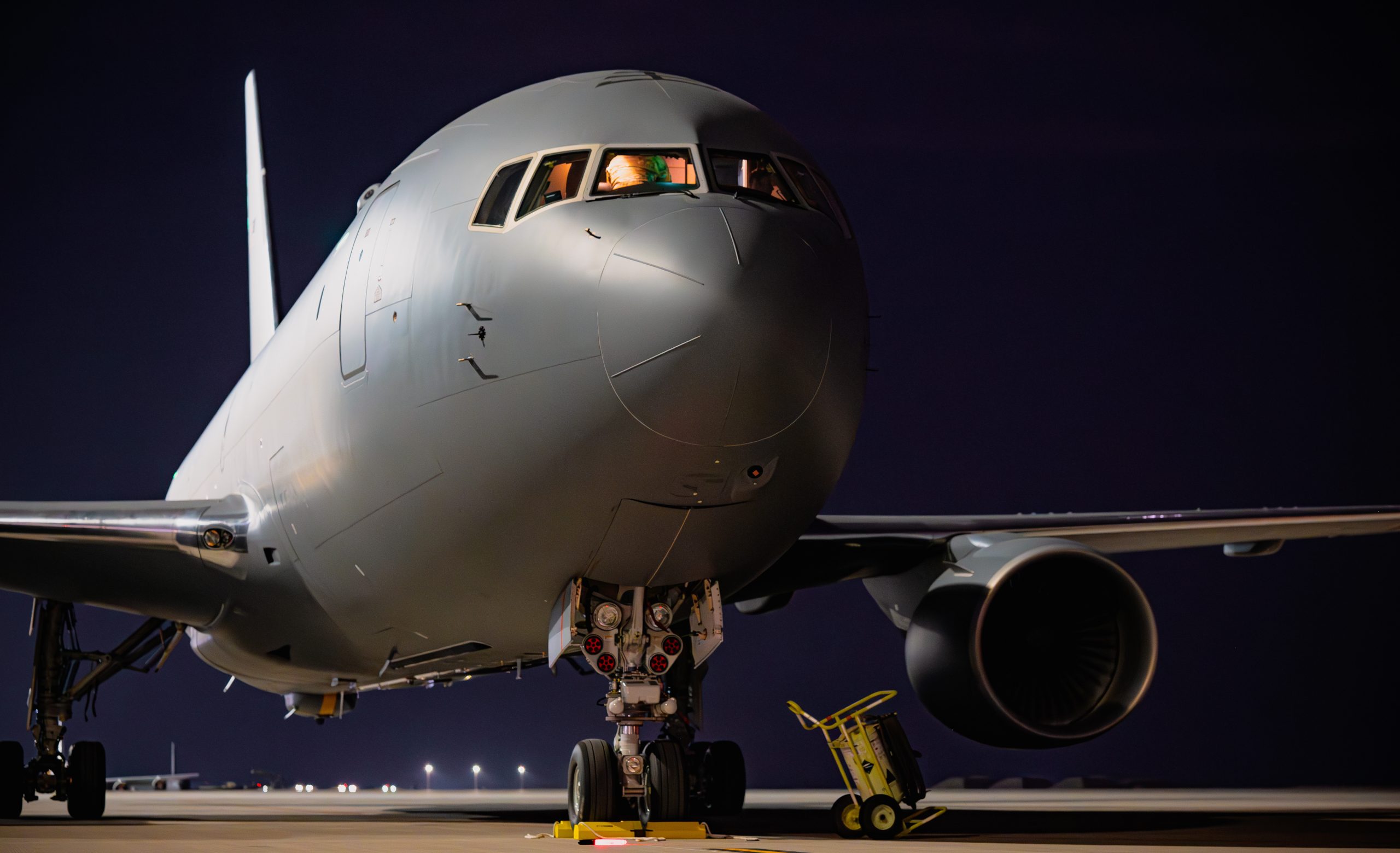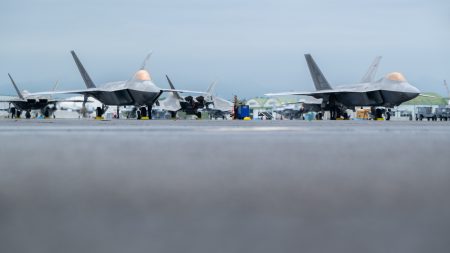
U.S. Air Force F-22A Raptors assigned to the 525th Fighter Generation Squadron, Joint Base Elmendorf-Richardson, Alaska, sit on the flightline before takeoff during Keen Sword 25 at Japan Air Self-Defense Force Nyutabaru Air Base, Japan, Oct. 29, 2024. Keen Sword is a biennial, joint and bilateral field-training exercise involving U.S. military and Japan Self-Defense Force personnel, designed to increase readiness and interoperability while strengthening the ironclad U.S.-Japan alliance. (U.S. Air Force photo by Staff Sgt. Gary Hilton)
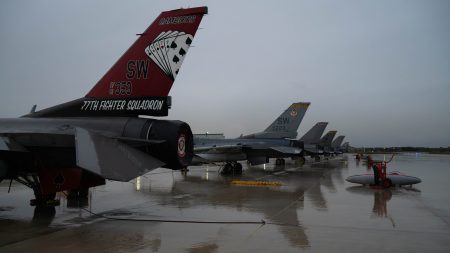
U.S. Air Force F-16 Fighting Falcons, assigned to the 77th Expeditionary Fighter Squadron, sit on the flight line during Keen Sword 25 at Japan Air Self-Defense Force Tsuiki Air Base, Japan, Oct. 28, 2024. Keen Sword is a biennial, joint and bilateral field-training exercise involving U.S. military and Japan Self-Defense Force personnel, designed to increase readiness and interoperability while strengthening the ironclad U.S.-Japan alliance. (U.S. Air Force photo by Senior Airman Cedrique Oldaker)
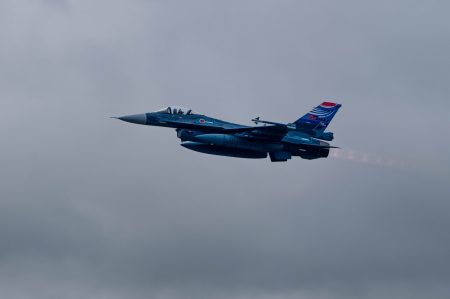
A Japan Air Self-Defense Force Mitsubishi F-2 takes off from Tsuiki Air Base, Japan, in support of Keen Sword 25, Oct. 28, 2024. Keen Sword is a biennial, joint and bilateral field-training exercise involving U.S. military and Japan Self-Defense Force personnel, designed to increase readiness and interoperability while strengthening the ironclad U.S.-Japan alliance. (U.S. Air Force photo by Senior Airman Cedrique Oldaker)
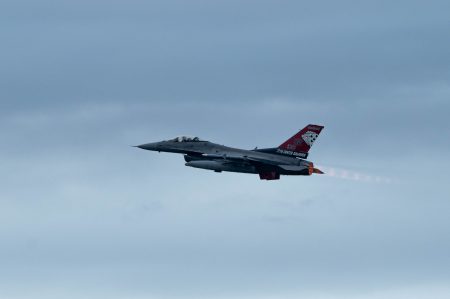
A U.S. Air Force F-16 Fighting Falcon, assigned to the 77th Expeditionary Fighter Squadron, takes off from Japan Air Self-Defense Force Tsuiki Air Base, Japan, in support of Keen Sword 25, Oct. 28, 2024. Keen Sword is a biennial, joint and bilateral field-training exercise involving U.S. military and Japan Self-Defense Force personnel, designed to increase readiness and interoperability while strengthening the ironclad U.S.-Japan alliance. (U.S. Air Force photo by Senior Airman Cedrique Oldaker)
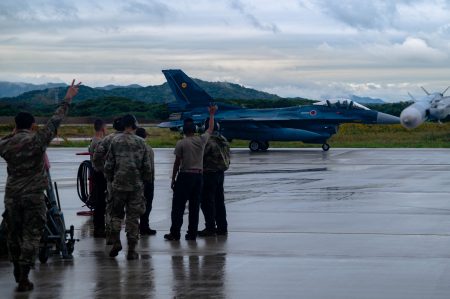
A Japan Air Self-Defense Force Mitsubishi F-2 taxis by U.S. Air Force Airmen with the 77th Expeditionary Fighter Generation Squadron at Tsuiki Air Base, Japan, during Keen Sword 25, Oct. 28, 2024. Keen Sword is a biennial, joint and bilateral field-training exercise involving U.S. military and Japan Self-Defense Force personnel, designed to increase readiness and interoperability while strengthening the ironclad U.S.-Japan alliance. (U.S. Air Force photo by Senior Airman Cedrique Oldaker)
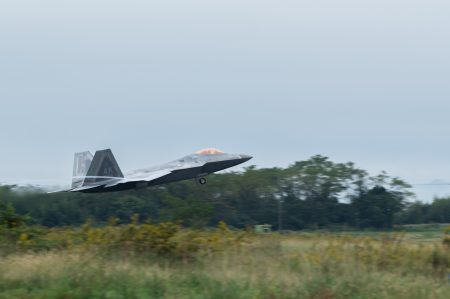
U.S. Air Force F-22A Raptors assigned to the 525th Fighter Generation Squadron, Joint Base Elmendorf-Richardson, Alaska, sit on the flightline before takeoff during Keen Sword 25 at Japan Air Self-Defense Force Nyutabaru Air Base, Japan, Oct. 29, 2024. Keen Sword is a biennial, joint and bilateral field-training exercise involving U.S. military and Japan Self-Defense Force personnel, designed to increase readiness and interoperability while strengthening the ironclad U.S.-Japan alliance. (U.S. Air Force photo by Staff Sgt. Gary Hilton)
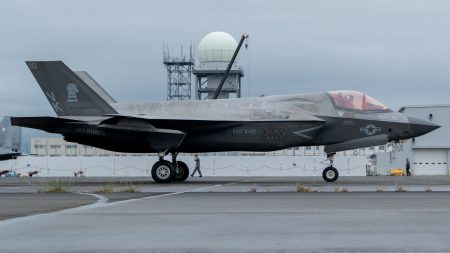
A U.S. Marine Corps F-35B Lightning II assigned to Marine Fighter Attack Squadron 121, Marine Aircraft Group 12, taxis down the runway during Keen Sword 25 at Japan Air Self-Defense Force Nyutabaru Air Base, Japan, Oct. 29, 2024. Keen Sword is a biennial, joint and bilateral field-training exercise involving U.S. military and Japan Self-Defense Force personnel, designed to increase readiness and interoperability while strengthening the ironclad U.S.-Japan alliance.(U.S. Air Force photo by Staff Sgt. Gary Hilton)
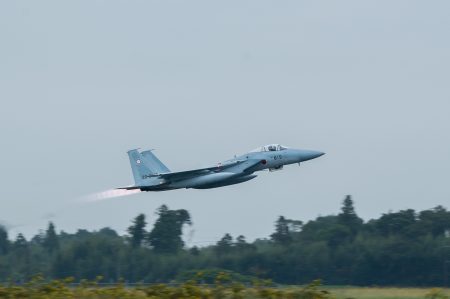
A Japan Air Self-Defense Force F-15J Eagle assigned to the 305th Tactical Fighter Squadron, takes off from JASDF Nyutabaru Air Base, Japan in support of Keen Sword 25, Oct. 29, 2024. Keen Sword is a biennial, joint and bilateral field-training exercise involving U.S. military and Japan Self-Defense Force personnel, designed to increase readiness and interoperability while strengthening the ironclad U.S.-Japan alliance. (U.S. Air Force photo by Staff Sgt. Gary Hilton)
